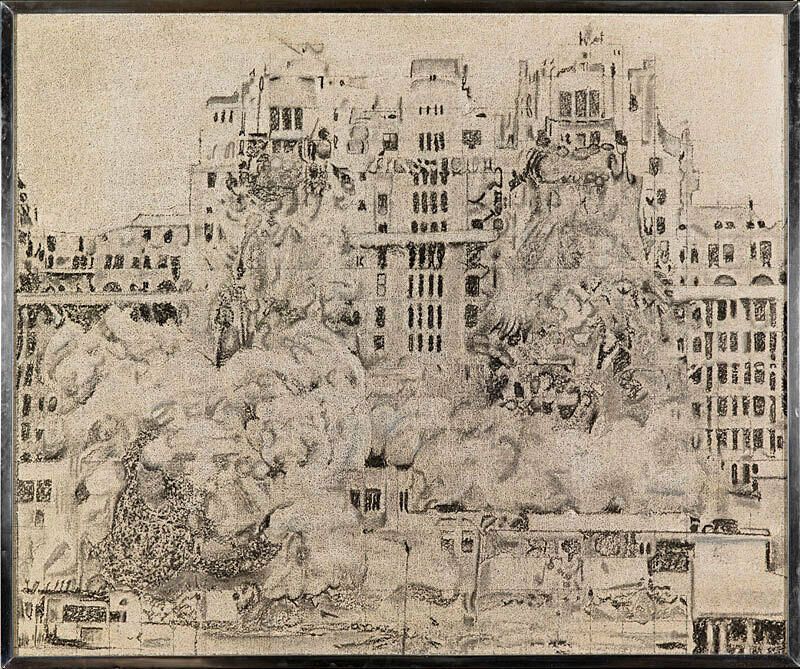On View: Richard Artschwager, Destruction IV (1972)
Dec 3, 2012
Although in dialogue with Pop art, Minimalism, and Conceptual art, Richard Artschwager’s work remains untethered to these or any of the other dominant movements of twentieth-century art—a fact which is evidenced in Richard Artschwager!, the Whitney’s career retrospective of the artist. Walking through the galleries of painting, sculpture, and drawing, I observed that while Artschwager’s work is often beautiful, its aesthetic appeal is just as often challenged or disrupted by the artist’s use of non-traditional materials: rubberized hair, Formica, and, in the case of much of his painting, Celotex—a textured fiberboard that is regularly used in home insulation. Destruction IV, (1972), part of Artschwager’s Destruction painting series, is an example. Each work in the Destruction series depicts a chronological stage in the 1972 demolition of the once-luxurious Traymore Hotel in Atlantic City, New Jersey—the first in the sequence depicts the hotel just before its implosion, the final only a large, billowing cloud of dust and debris. Destruction IV occurs somewhere in the middle. The use of the fibrous Celotex material in this work creates a different effect than would canvas. It blurs the image; and this effect, in turn, becomes crucial to forming an understanding of the painting.
Artschwager based the work not on his first-hand account, but rather a newspaper photograph that documented the event. This is an important point. Destruction IV is, for Artschwager, not a representation of reality, but a representation of a representation of reality—and a grainy, debased one at that. Exhibition curator Jennifer Gross notes in her catalogue essay that, for Artschwager, the perception of reality in the twentieth century was transformed by media and new technologies. More often than not, reality is mediated through an interface, such as a newspaper photograph or a screen. The use of Celotex is key to capturing the sense of this in Destruction IV. A dynamic, violent, thoroughly real event is tempered and made abstract, just as it would if one encountered it through media.
By Gene McHugh, Interpretation Fellow

